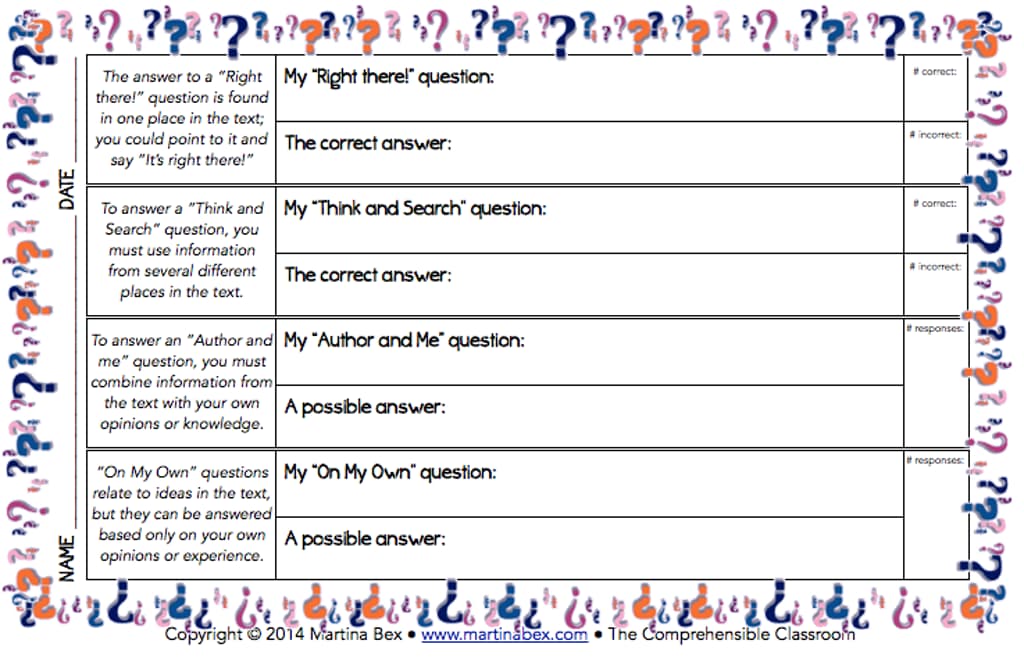On my to-do list every day for the past three weeks has been to complete the next homework assignment for my Cooperative Learning/Social-Emotional Learning course. The class meets again on Saturday, so I'm running out of time to procrastinate!
At the last class, we practiced several Kagan structures, including "One Stay, Two Stray" and "Inside-Outside Circles". The QAR form that I created today would work well with either structure.
This form is meant to be used as a follow-up activity to a reading. I imagined two scenarios:
- The class reads a short reading selection, and students formulate questions based on any part of the reading.
- The class reads a longer reading selection (like a chapter from a book, or a complex multi-paragraph selection), but you assign students specific portions of the text that they must use to formulate their questions. If you want to use Inside-Outside Circles, split the class in half and have "A" students write questions from the first half of the reading and "B" students write questions from the second half. If you are doing One Stay, Two Stray, divide the text into three parts and have each group of students (A, B, or C) base their questions on a different portion of the text.
Students will complete the form (attached) by writing four questions about the passage that they were assigned; one question for each QAR type. (If you need more information about QARs, please see this post.)
Have students ask their questions to their classmates using the Kagan structure that you've chosen. You can either have students ask all four questions to their partners or group-mates, or you can call out a specific question type that you want the students to ask (Ex: "Everyone ask a 'Right There' question" or "Student A asks an 'Author and Me' question; Student B asks an 'On My Own' question").
Have students keep track of how many of their classmates answered their questions correctly and incorrectly (tally marks in each question's box work fine), then you can collect the forms and see which questions stumped your students.





